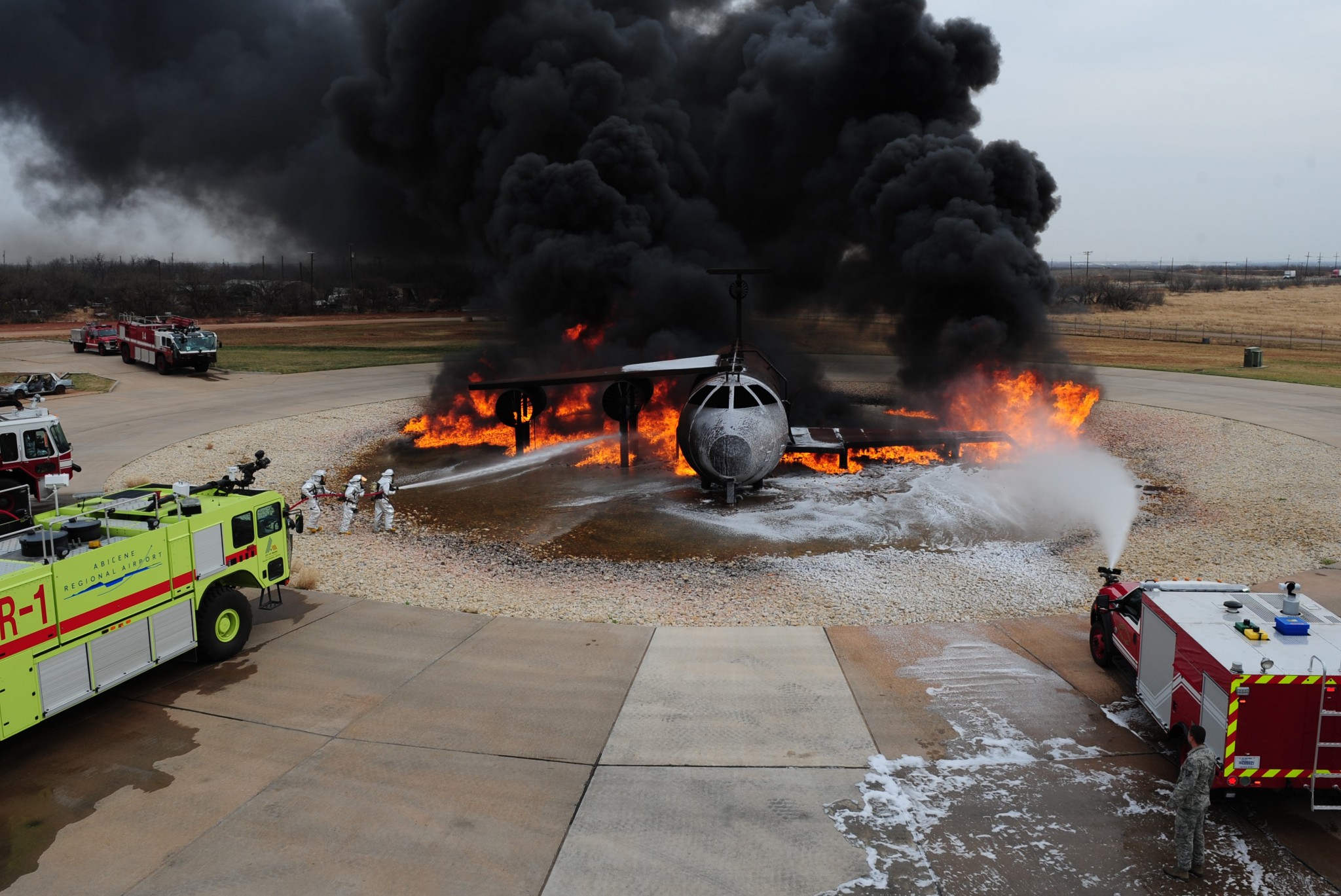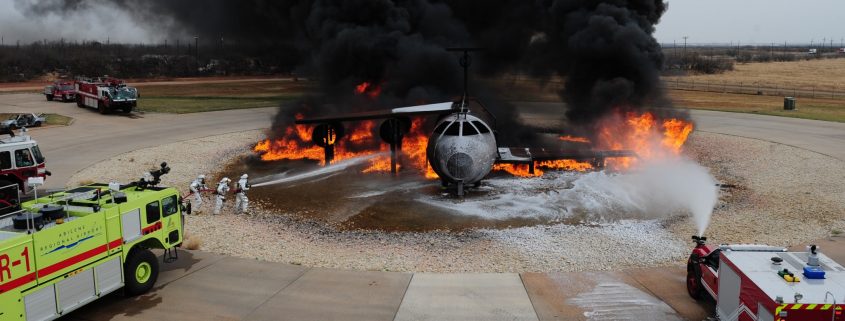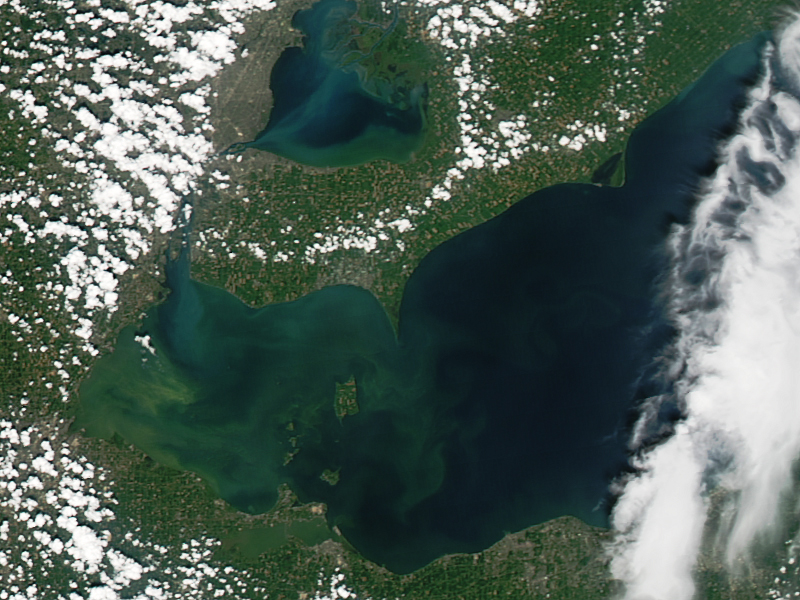Perfluorinated Chemicals Health Study Included in Congress Budget Deal
CDC will assess exposure to the chemical at U.S. military bases.

A live fire training exercise April 2, 2014, at Dyess Air Force Base, Texas. For decades the foams used in these exercises contained toxic perfluorinated compounds that have now entered groundwater, lakes, and rivers. U.S. Air Force photo by Senior Airman Kia Atkins
By Brett Walton, Circle of Blue
House and Senate negotiators secured $10 million in the fiscal year 2018 budget for a study of people on military bases who were exposed to perfluorinated chemicals, also known as PFAS.
The study is a tiny slice of the $1.3 trillion federal budget that Congress is expected to approve this week. But it is an essential first step in linking health problems that veterans and their families now experience to chemicals they may have been exposed to while serving.
PFAS chemicals were prevalent on military bases in the foams used to fight petroleum fires that could result from a plane crash. At fire training sites and elsewhere on the bases the foams were deployed in weekly exercises, often spread or washed onto the ground. Over time the chemicals leached into groundwater and contaminated wells that provided drinking water to some bases. The Defense Department has identified 393 bases where the chemicals were released to the environment.
Included in the budget deal is other money directed at PFAS cleanup on military bases: $42.2 million for the Navy, and $43.8 million for the Air Force. Communities near bases that are dealing with contaminated water also get a boost. The budget doubles the size of emergency grants, to $1 million. Communities use these grants to extend public water lines to homes whose wells test positive for PFAS compounds.
The study will proceed in two phases. First, at least eight bases, active or closed, will be selected as test sites for an exposure evaluation. Due in two years, this phase will assess which of the thousands of PFAS compounds veterans might have ingested and in what quantities.
Those findings will inform the health study that will follow. It will look at the cumulative effect of exposure to multiple PFAS compounds. Both studies will be conducted by the Centers for Disease Control and Prevention and the Agency for Toxic Substances and Disease Registry.
Interpreting the results in light of the latest science will be essential, Philippe Grandjean, a professor of environmental health at Harvard University, told Circle of Blue via email. Grandjean and others argue that the U.S. Environmental Protection Agency’s health guidance for PFAS in drinking water — at 70 parts per trillion for the two most well-known compounds — is too high.
A number of states agree, having lowered their standards. New Jersey, for instance, now regulates PFOA, one such compound, at 14 parts per trillion in drinking water.
Tom Bruton, a policy fellow at the Green Science Policy Institute, a research group, said that there is a lot that scientists do not know about how different PFAS compounds interact in human bodies. The study may illuminate that, he said. It could also help direct cleanup funding to its best possible use.
“Now is a logical time to learn all we can about health effects, rather than after the country spends billions on cleanups,” Bruton told Circle of Blue.
The largest PFAS health study to date in the United States assessed some 70,000 people in the Ohio River Valley who were exposed to PFOA from a DuPont manufacturing plant in Parkersburg, West Virginia. That study found links to high cholesterol, thyroid disease, testicular cancer, and kidney cancer.
In its October 2017 report to Congress, the Defense Department stated that it had spent $202 million to test water supplies for PFOA/PFOS and to begin cleanup. Those figures do not include expenditures in 2017. Nearly all of that money was diverted from other military environmental cleanup programs, which, the department said, will result in delays at other contaminated sites.
Brett writes about agriculture, energy, infrastructure, and the politics and economics of water in the United States. He also writes the Federal Water Tap, Circle of Blue’s weekly digest of U.S. government water news. He is the winner of two Society of Environmental Journalists reporting awards, one of the top honors in American environmental journalism: first place for explanatory reporting for a series on septic system pollution in the United States(2016) and third place for beat reporting in a small market (2014). He received the Sierra Club’s Distinguished Service Award in 2018. Brett lives in Seattle, where he hikes the mountains and bakes pies. Contact Brett Walton









Leave a Reply
Want to join the discussion?Feel free to contribute!